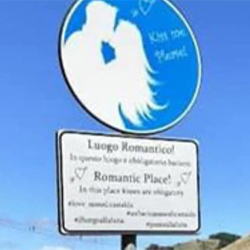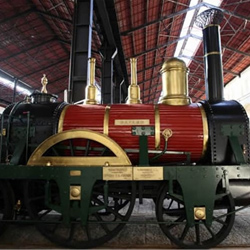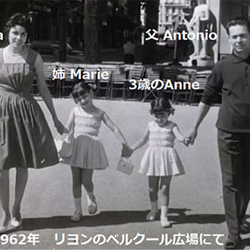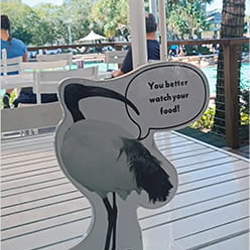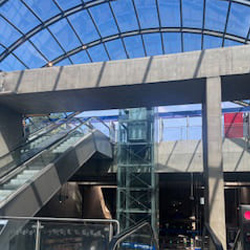You’d be aware that Japan has launched the Go-To campaign series featuring Travel, Eat, and Events, and there appear to be signs that tourism demand is recovering, at least domestically. But in Spain, COVID-19 infection has started to spread again, and things are highly unpredictable. There is still no light at the end of the tunnel for tourism-related businesses, and cultural pursuits such as the arts and the performing arts, which are closely connected to tourism, are of course also in a difficult situation, while the museum and the flamenco worlds too face harsh realities.
In Madrid there are 21 tablao — theaters, taverns, and restaurants where you can see flamenco — but they are closed and of course the performers no longer have any work, while the Prado Museum has been such a popular spot that it has always been included in itineraries for tours from Japan staying in Madrid and it finally managed to open up in part, but the numbers of visitors are a long way down on pre-COVID-19 numbers.
In response, the Association of Flamenco Tablaos of Madrid and the Prado Museum released a jointly produced promotional video on September 27, an important day for the tourism industry, with the intention of providing a boost to the tourism industry, contributing to global mutual understanding across national borders, and to keep alight the flame of culture in the arts and performing arts. September 27 is World Tourism Day, established in 1980 by the United Nations World Tourism Organization (UNWTO), which has its headquarters in Madrid.

Performers lined up in the Velázquez room, which you could call the throne room of the Prado Museum.
Flamenco, Spain's leading performing art, is registered as UNESCO Intangible Cultural Heritage, as Japan’s Noh and Kabuki are, and here it is performed in a space displaying paintings considered the treasures of the Prado Museum. The atmosphere here differs from the usual flamenco performances with their gorgeous displays of dance in unique dress, this time the performers are dressed in monotones, black or white, and dance to innovative choreography inspired by the paintings, which I think expresses their moods well.
The end credit roll includes the quotation:
“En defensa de la cultura como vínculo que supera todas las fronteras,” or
“Culture as a bond that overcomes all borders.”
https://www.museodelprado.es/actualidad/videos
Prado Museum website
Please watch the video:https://youtu.be/03PBqFeJ8I0
Guide map to the video shooting locations
Here is a simple explanation of what the video shows.
1. 00:00 - 0:22 (Room 9 on the guide map)
The video opens in the main hall (Sala Basilical), the Prado Museum’s center stage where works by Velázquez hang, the performers in a line in front of Las Meninas, considered his crowning work, along with some of his other paintings. “Maestros” is the name of the tune that starts here and continues throughout the video. It is one of the Sevillanas, folk songs characteristic of the Andalusian region, especially around Seville, in the southwestern part of Spain. The cante (singing) is by the woman who appears at the end of the line, dressed in black. This is María Mezcle. She is responsible for composing the music and writing the lyrics.
2. 00:23 - 00:54 (Room 12 on the guide map)
Manuel Liñán is the dancer who performs here superbly with the mantilla (shawl). On the right is The Martyrdom of St. Andrew, on the left The Holy Family with a Little Bird, and in the center, The Immaculate Conception of Los Venerables, all by Murillo, a painter born in Seville.
3. 00:55 - 01:05 (Room 1 on the guide map)
This shirtless dancer is Jesús Carmona, a 35-year-old man born in Barcelona. Seeing him dance in front of one of Prado's 10 must-see works, The Descent from the Cross by Rogier van der Weyden, a painter from flamenco (in this case, flamenco means the Flanders region), I can’t help comparing him with the figure of Christ behind him.
4. 01:06 - 01:25 (Room 9 on the guide map)
Here Cristina Cazorla performs Spanish dance in the presence of Queen Mariana of Austria painted by Velázquez. She dances gracefully, cheerfully even, in an outfit closely resembling the dress in the portrait, bringing to mind the world of tapestry cartoons painted by Goya, although the times differ slightly.
5. 01:26 - 01.40 (Room 1 on the guide map)
The video returns to the scene in 3. The dancer’s expression, using both arms and so on, closely resembles the arms of Christ, supported on both sides, behind the dancer.
6. 01:41 - 02:08 (Location 11 on the guide map)
Eduardo Guerrero says when he put himself in front of Rubens' Saint George and the Dragon, he immediately had the instinctive feeling that "He is me, I'm a fighter," and could see himself dancing in black dress.
7. 02:09 - 02:32 (Room 4 on the guide map)
Here Antonio Najarro, who directed this project, shows and lets us hear his superb performance on the castanets, important accompanying instruments in flamenco, in front of three works by El Greco, from left, The Resurrection, The Annunciation, and Pentecost.
8. 02:33 - 03:02 (Location 13 on the guide map)
Along with the castanets, an important accompaniment in flamenco is the tap technique called zapateo or zapateado. Here Olga Pericet gives a glorious zapateo performance. Hanging behind her are Rubens' The Three Graces and somewhat frightening paintings with Rubens and Goya competing on the same topic, Saturn Devouring a Son.
9. 03:04 - 03:35 (Room 9 on the guide map)
The video returns to the opening scene for the finale with the performers all together again. They cannot maintain social distancing for their final, finishing pose, so they wear the inevitable mask.
I wonder if you enjoyed this video with its very Spanish feel, combining painting and flamenco for a surprisingly perfect harmony, staged thanks to COVID-19.










